In the past few years, the 1000g class of touring boots, what we’ll refer to as the “lightweight” class has expanded. Gone are the days of foot-binding type pain and an accompanying too stiff or too soft boot. While not going overboard on the mass of a particular ski, you can find your bliss on the ups and downs. When they fit properly, these lightweight boots should feel more like slippers.
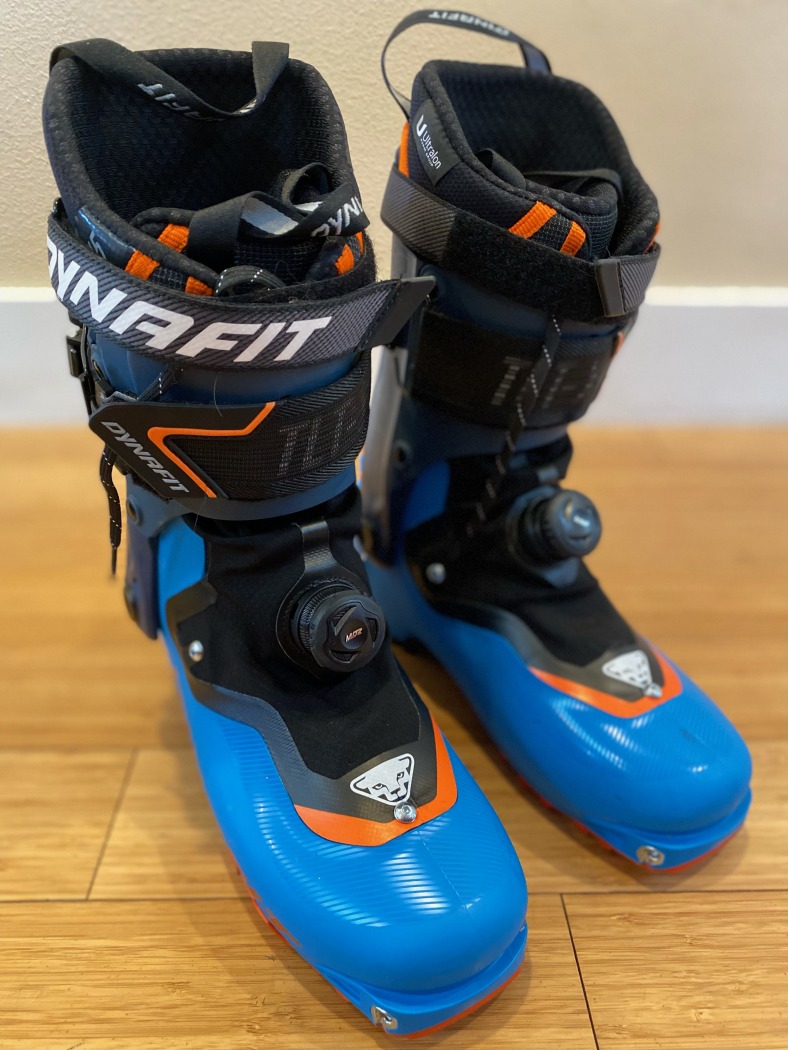
The TLT Xs are the newest version in the Dynafit TLT family.
Dynafit TLT X
The TLT X from Dynafit offers the wide, high-volume feet a home and a chance to float uphill in a 1000-gram boot. The latest variation of the Tourlite Tech consolidates the best-of design features of previous models while removing some less popular features. All of these upgrades result in a boot that is easy to walk in and easy to ski and should be considered on any skier’s short list of touring boots for the upcoming season.
If it must be talked about here, the TLT X employs the same “clever” use of Roman numerals that Apple used when it launched the iPhone 10. Like Apple, Dynafit skipped the 9 in its long and tumultuous iterations of TLT boots released over the last three decades. Notably, the X surrenders the last vestigial Speed Nose Toe originally designed to move the pivot point of the tech fit back ever so slightly for a Dynafit-declared more natural stride. The speed nose remained an uphill battle (excuse the obvious pun, but they started it by calling it the TLT X) as it limited crampon use, binding compatibility and frankly just looked weird when on the shelf with other less innovative boots.
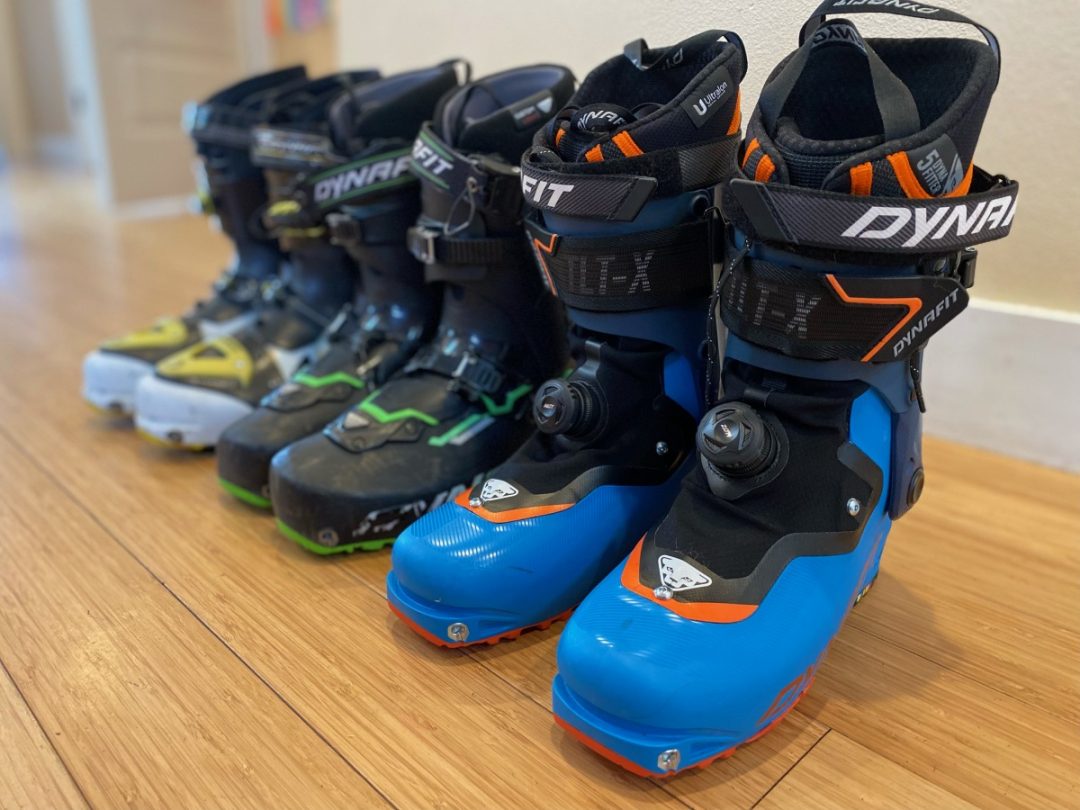
From right to left: Dynafit TLT X, 8, and 5. In the TLT X, the fit is more generous to accommodate more foot types ands they are verified comfy for long haul tours.
Fit Tips
The TLT X feels wider than the advertised 101mm last and has ample vertical toe room. The vertical space is great for circulation for those with cold feet, but a skier who likes the reassuring firm handshake of constant pressure throughout the forefoot may not like the extra room. The liner is an upgrade from anything we have seen in previous TLTs and takes a solid heat mold. However, it is thin to save weight, so don’t expect miracles in volume expansion. Lastly, the shell is significantly easier to work on than other lightweight boots that have extra carbon in the cuff. Shell customization shouldn’t be a problem for an experienced bootfitter used to working with lighter touring boots and shell materials with lower melting points.
How it Skis
The TLT X performs admirably in steep firm snow testing and mellow powder meadow skipping. It was so consistent between turns that analyzing its turning ability was almost an afterthought to enjoying the movement itself. The forward flex of the boot is soft, so skiers that need raw power should be warned. However, its lateral and torsional stiffness are solid, as long as you keep your ski pairing below 95 mm in the waist.
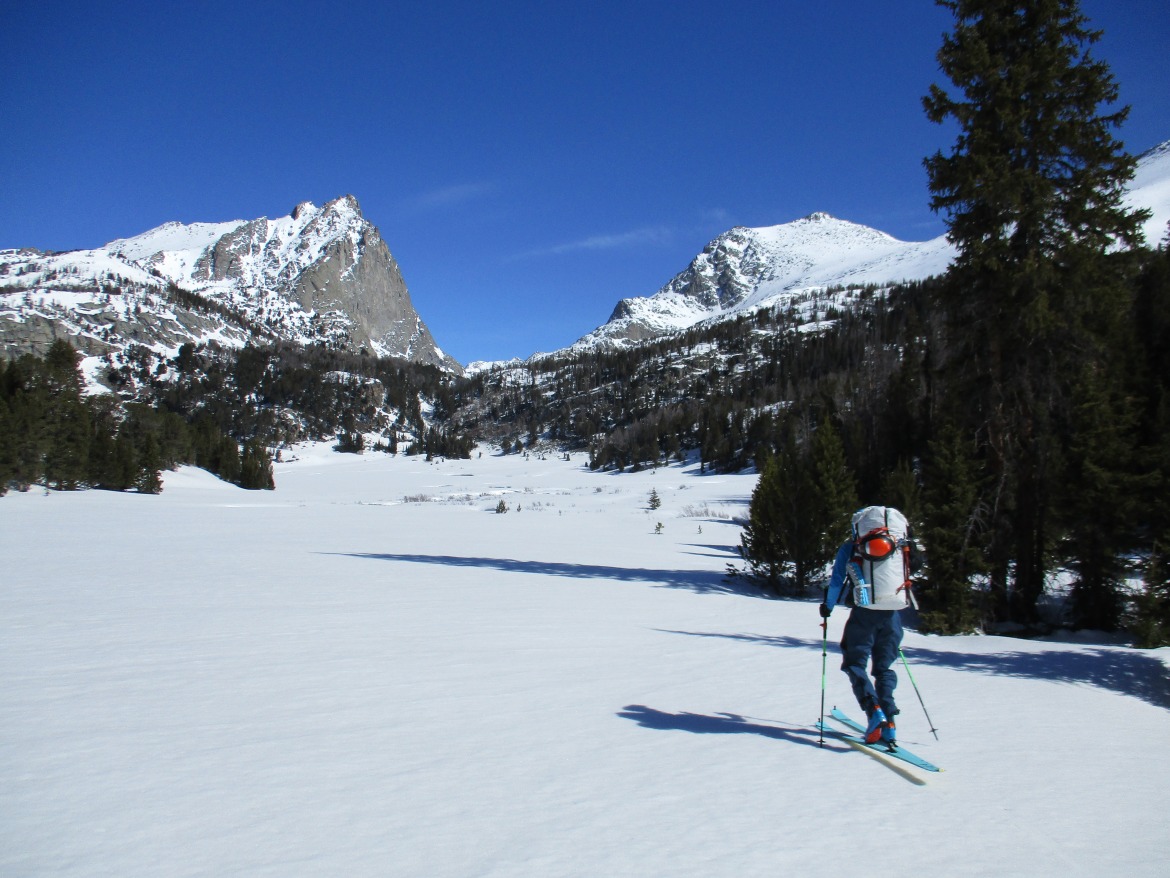
The TLT X is a long haul master with improved comfort and enough stiffness to make turns with a heavy load. Photo: Brian Parker.
How it Tours
Although abandoning the speed nose will likely be a good move, Dynafit held onto its less notorious and far more appreciated one buckle throw between walk and ski mode. Unlike the Hoji Pro Tour turned Dynafit Radical Pro, the power strap is not integrated into the buckle. On shorter ascents, you can leave the strap cinched with a slight decrease in range of motion. For longer approaches, this strap must be loosened manually to obtain an optimal range when striding uphill. Further down the cuff lies the new Ultra Lock 5.0 buckle/strap hybrid. Its quick-release system lets you set it at the correct tightness and easily remove the boot without messing with your settings. This buckle is fully integrated into your tour mode for fiddle-free transitioning. Ascending is clearly the number one goal of this boot, so find a skin track with perfect angular kick turns and enjoy the ride.
Gripes
The new Twist Lock Closure system is both a huge fit advantage of the boot and a possible red flag. Unlike a traditional Boa system, Dynafit uses a plastic molded plate that sits under the shell. As you turn the dial, a thin cable tightens, allowing the plate to hold your foot in place. Most times, the plate sits on a sweet spot between your ankle and forefoot. On a few rare occasions, the plate sits askew and feels suboptimal. Turn the knob slowly when tightening, and this should alleviate potential issues. This adds a new system to the boot with some adjusting to get it in the right place. Lastly, make sure the cable runs through the plastic tab/guide on the plate, before inserting the liner. It’s easy to ensure the cable runs properly, but keep an eye on it.
Closing Thoughts
We are confident that the TLT X is the best TLT boot yet (or at least since the masterpiece of the TLT6). Dynafit has done a wonderful job paring down their features; this is a sleek, easy to operate boot at the impressive weight of just over 1000 grams. If you have a wider foot and don’t need as stiff as a brick flex, find a pair before they are gone
Size tested: 27.0/27.5
Verified Weight: 1118g/boot
Women’s Specific Model: Yes, TLT X W
ROM: ~60-degrees
Materials: Upper Grilamid/fiberglass, lower is Grilamid.
Last: 101mm with a wider forefoot.
Forward Lean: ~15-18 degrees
MSRP: $799.95
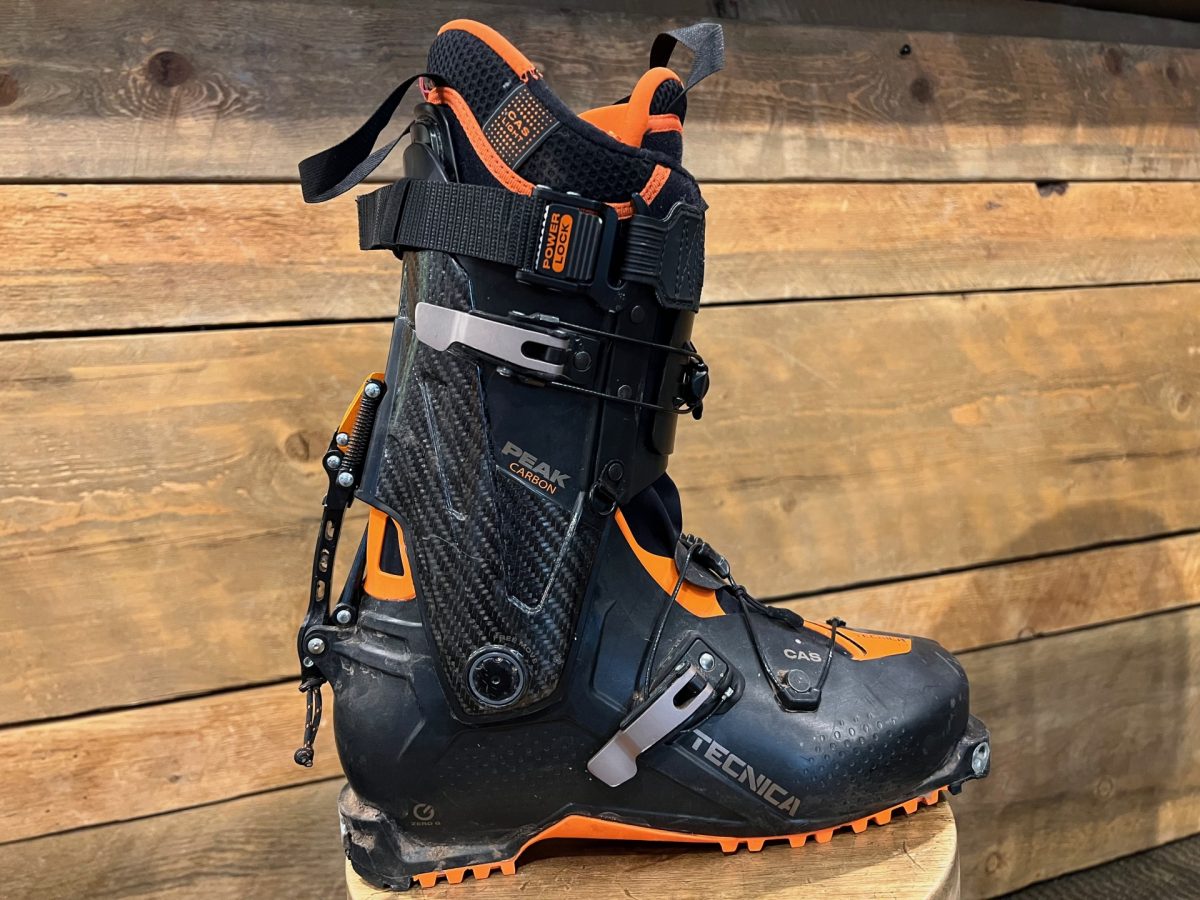
Tecnica makes a big splash in the 1kg class of ski boots with the new Zero G Peak. This is a lovely looking boot for demanding skiers.
Tecnica Peak Zero G Carbon
Among the cognoscenti of light and fast, there’s a sub-group of practitioners bullish, even exuberant, on Tecnica’s Zero G Tour Pro: it helped reestablish downhill supremacy (it’s a four buckle + power strap overlap construction, with an acceptable range of motion on the ups). For those bearish on hauling anything creeping beyond, say, 1150g of boot up a skin track, the weight from Technica for a 1kg class boot was a long way. With the arrival of Tecnica’s Zero G Peak Carbon, exhale that sigh of relief, snuff out the Nag champa incense; the boot has arrived.
With a carbon cuff, a carbon-infused grilamid lower, coupled with a Z-cable buckle, upper buckle and cam-lock operated powerstrap, this tasty morsel from Italy will snug around your foot. This boot has a near-perfect combination of torsional rigidity, progressive flex, and frictionless range of motion to warrant holy grail status. It provides excellent power transfer and that feel of airiness when notching 10k days or even “Denaling” in the backcountry. Ensure the boot fits; at this point, there are many all-hail models in the 1kg class.
Fit Tips
We’re not sure where all the foot models for ski boots originate, but let’s say there’s generally some foot size/shape diversity. With its 99mm last, the Zero G Peak Carbon should work for “average” feet, meaning those not needing massive arch support and reduced instep volume.
Our WildSnow tester in Montana, known to drive heavier spec’d skis in the 1800g and above range, found the lightweight liner well constructed and on par with similar liners in the class. Still, he’d prefer an Intuition Power Wrap liner to add even more “oomph” to the shell-liner pairing. Forward lean is adjusted with the addition of a velcro spoiler, which can eat up some volume for the skinny calved out there too. There’s ample room for the toes, but the toe box feels a bit more traditional (in its lack of width) than the new TLT X and S/Lab MTN Summit. Again, fit matters; make sure it works for you.
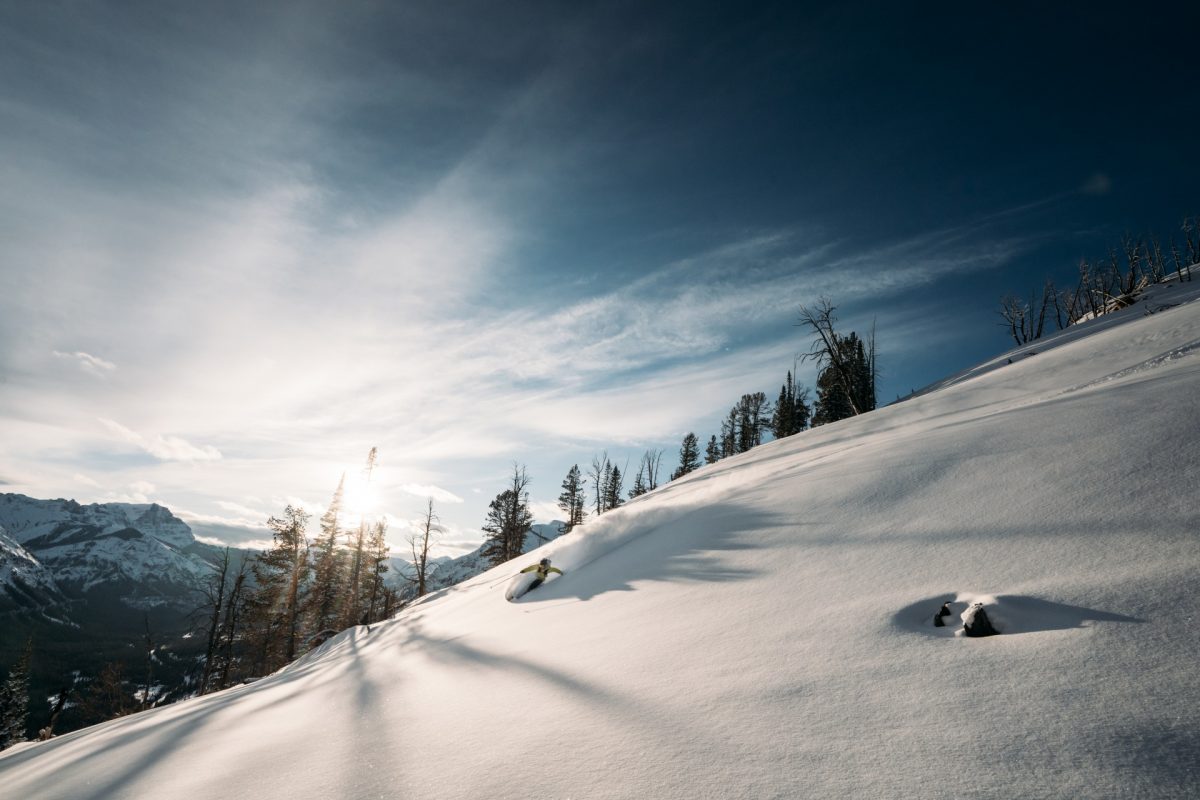
Ben Hoiness, the author and Zero G Peak fan, enjoysCooke City’s winter light. Photo: Leslie Hittmeier.
How it Skis
A straight and clear answer to “how it skis?” is this: great. The trend towards stiffer rewards more aggressive skiers, but there’s some downside too, and that can be flexing into a brick wall of “stiffness” as you initiate and drive through a turn. Progressive is a buzzword, and with ski boots, a boot’s flex becomes stiffer the deeper you push into the flex pattern. Driving the Zero G Peak Carbon through a turn is a sensation of soft initial flex and a smooth transition as you tap into the chassis’ carbon for more robust stiffness. “The biggest difference here compared to other boots is the predictability of the boot in adverse conditions,” notes our WildSnow reviewer. “The down is truly where this boot shines, and I’m a believer that if this is what Tecnica can do on their first try at a boot in this class, all other MFGs may need to bow down…”
How it Tours
Not a rhetorical question, but, with this boot, it may seem that way. Strolling uphill, casually chatting up your mates on the skinner, you might be the one gasping the least and grinning the most, as the tour mode and walkability are on par with the best non-race specific boots. Transitions are relatively straightforward; from ski-to-skin, loosen the power strap’s cam lock and buckles if need be, flip up the spring-loaded throw in the rear, and get giddy busting a lung.
Gripes
All things evolve, well, maybe most things. And we currently see, really, only one area for expedited evolution in this boot. The ski/walk throw, when not locked in ski mode, protrudes a bit from the boot’s rear spine. Catching the throw on an obstacle is unlikely since, most often, when walking, climbing, booting, or scrambling, you face the slope. But if things get a bit gymnastic, as they are likely to do ascending more complex and technical terrain, snagging the throw and even breaking it may not be out of the question.

A close up of the Zero G Peak’s lockout mechanism. It is spring loaded and easy to use.
Closing Thoughts
If you haven’t exhaled like we asked at the onset of this best-of blurb, please do so; the Oxygen will do you wonders, as will slipping on a pair of Zero G Peaks. The skiability won’t disappoint, and it has Zero in the name, meaning the weight conscious should apply— the world adds another great boot to the 1kg class. As far as touring gear goes, we live in good times.
Size tested: 26.5
Verified Weight: 1,013g
Women’s Specific Model: Yes, Zero G Peak W
ROM: ~ 75 degrees
Materials: Carbon cuff, carbon-Grilamid lower.
Last: 99mm
Forward Lean: 13 to 15 degrees by adding a spoiler.
MSRP: $949.95
Shop for the Zero G Peak Carbon.
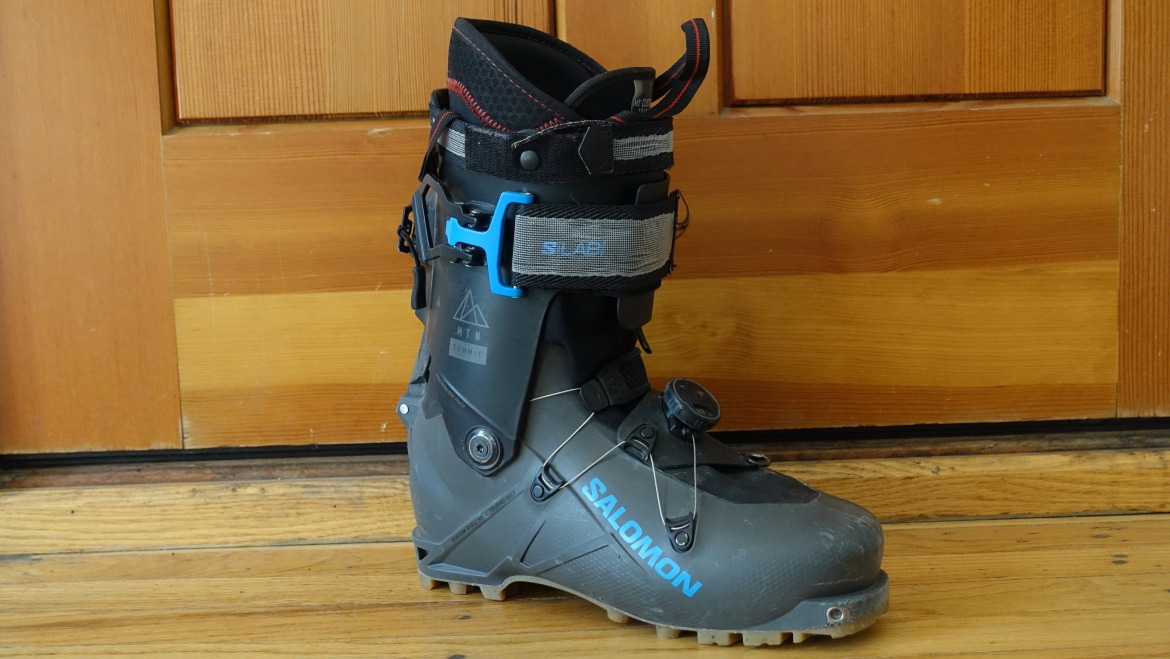
New for 2022-2023, Salomon debuts a rethink of the S/LAB MTN Summit. This comfortable boot skis stiff and keeps the weight to a minimum.
Salomon S/Lab MTN Summit
It’s been a few years since Salomon turned heads with a lighter-weight boot option — consider our heads turned. In the lineup of new 1kg boots debuting this fall, Salomon’s S/Lab MTN Summit is an eye-catcher and welcome entrant to this boot class. What makes the S/Lab MTN Summit appreciated is it offers up another option for dialing in fit while not sacrificing skiability. The boot weighs a respectable and confirmed 1206g/boot in size 27.5. Some may gasp that the boot yawns beyond 1100g or so. With the extra 100g, you should find this boot near the stiffest of the offerings in the class, rivaling stiff-booted stalwarts like the Scarpa F1 LT as setting a high benchmark for lightness and stiffness.
Fit Tips
The folks in France call this a 100mm last. At its narrowest part, that width may feel true to size. But the forefoot of the boot and liner feels markedly wider. Read that not as loose and too roomy, but more as the WildSnow review explained, like an Altra trail running shoe where the toe box offers ample room for toes to spread and feet to swell during long tours. For those who like BOA closure systems, this boot should suit you: the “touring belt” around the ankle forefoot region snugs the heel down and locks the foot. The heel secures average heels in place. Skinny-heeled folks may need to augment the fit there otherwise. One nice fit feature on this boot is that skinny calved skiers likely do not need to take up volume in the upper cuff. The buckle-strap and power strap secure the liner and shell nicely around thin calves.
How it Skis
The 1kg boot class runs the gamut from softish in the Dynafit TLT X and the Fischer Traver CS to stiff in the F1LT. The S/Lab MTN Summit is akin to the F1LT in stiffness, which translates into the ability to drive slightly longer, burlier, and wider skis than you usually would imagine. The flex is progressive; still it is good to know that the progressive nature of the flex begins further along in the stiff end of the soft-to-stiff spectrum. This means the initial flex of this boot is stiffer than other 1000g slippers. Skiing in this boot is a highlight, as you’re not hauling up excessive weight. If they fit your fit, you’re likely not going to feel underpowered: skiing in this boot is like taking the bull by the horns and being in control.
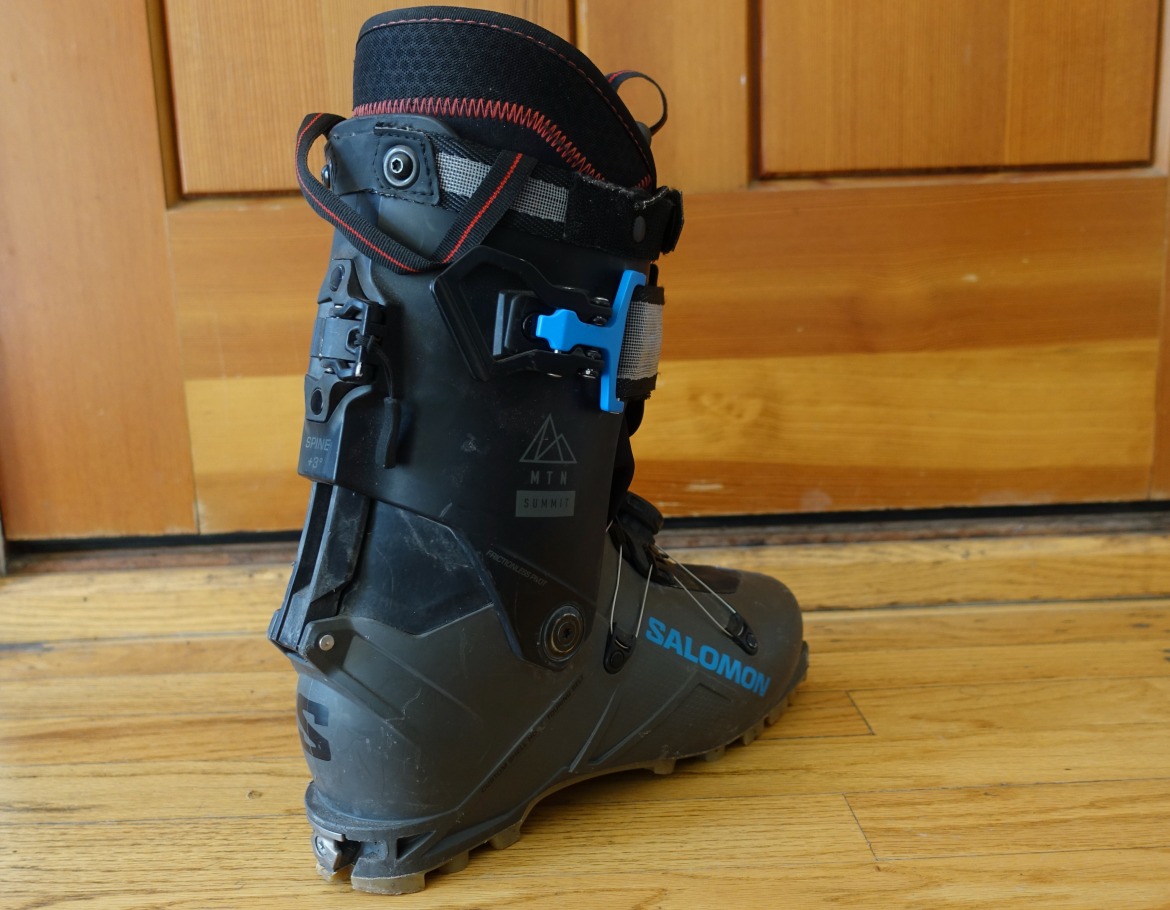
Tour to ski mode in this boot requires a simple flip of the walk-ski mode lever, a flip of the upper buckle, and maybe some loosening of the upper powerstrap.
How it Tours
As stiff as this boot is, there is some give when it comes to touring. It tours well, but there’s a qualifier. To maximize the boot’s range of motion, you need to loosen the power strap significantly, flip the buckle open, and even then, maybe loosen the velcro. With the addition of a liner sporting a stiff and reinforced upper cuff, you’re not taking advantage of the full range of motion if you don’t take these measures. And that range of motion is ample. Not quite in the realm of the Travers CS, but still, it walks/tours relatively friction-free when appropriately adjusted. The boot also is comfortable, so something you can go up and down and back up again in… all day long.
Gripes
There are no monumental grips with this boot. Try it on, though, as we suggest with any new boot. For many, it’s a comfortable ready ski fit out of the box. The only notable potential downside is the relative stiffness. Many skiers want the lightest, stiffest option of boot they can purchase. That’s sometimes not the best route for happy feet and happy skiing. Even if the boot fits, ensure the flex profile will work for your skiing style. This is still unsettled, but supply chain issues may impact early season delivery of this boot.
Closing Thoughts
Flex, flex, flex — we mentioned it many times. If the flex profile doesn’t work, but the fit is perfecto, Salomon offers slightly lower-priced options that flex softer. That’s one part of the equation, and as such, it helps bring Salomon into the realm of lightweight touring boots that can charge, tour, and rip on big lines.
Size tested: 27.5
Stated Weight: Actual weight 1206g/boot
Women’s Specific Model: Yes, MTN Summit Pro W
ROM: ~75-degrees
Materials: Ultramid shell, heat moldable
Last: 100mm
Forward Lean: 13.5 degrees, bumps to 16.5
MSRP: $799.00
Shop for the S/LAB MTN Summit.
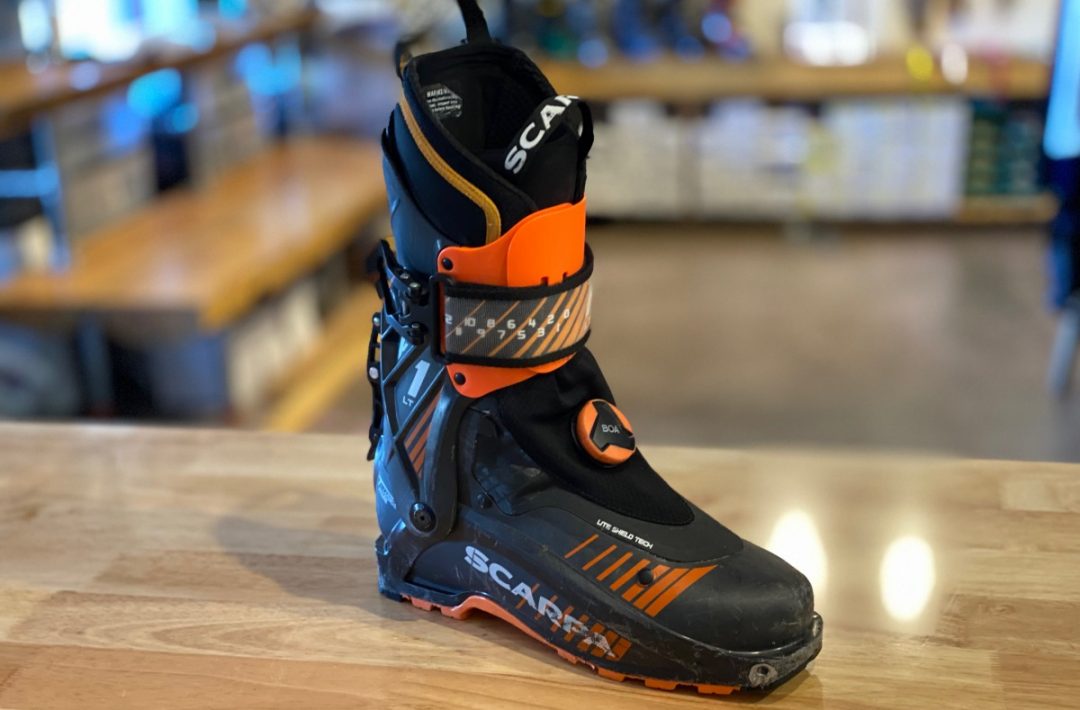
Scarpa’s F1 LT still is amongst the lightest stiffest boots around and it has found a cult like following. From steeps to long tours, the F1 LT will be at home.
Scarpa F1 LT
The Scarpa F1 LT remains at the top of the pyramid of 1-kilo boots because of its super stiff and supportive design and proven durability. We have had testers put well over a hundred days on them, with many of them on inappropriately and manufacturer-warranty-voiding wide skis. These boots are burly enough to push even a 100mm waisted ski, although Scarpa wisely dissuades this practice and sets the threshold at 90 mm for them to cover breakage. A lighter or newer skier could find the lack of progressive flex unforgiving, but the experienced ski mountaineer looking for the highest performance boot in this class should consider it.
Replacing the out-of-print Alien RS, but drastically cutting into the less stiff Scarpa F1’s sales, this boot is a Wildsnow fan favorite.
Fit Tips
With a 100 mm width across the forefoot, this should be a middle-of-the-road fit. If anything, the F1 LT fits on the narrower side, making it a great choice for medium to narrow-width footed skiers. Contributing to the slight out-of-the-box tightness is the Intuition Pro Flex Tour liner. Luckily, there is no better lightweight liner in the game than this customizable choice. After 10 minutes in a bootfitter’s oven and a foam toe cap, any skier will have notably more room. Pro Tip: If you can handle the pain, ski in the liner for a few days and avoid the heat mold. Because there is less to this liner, the liner incrementally breaks down every time you heat it. Replace the liner often, every 60-80 days, for best results. Although the width can be expanded and punches added to this carbon-Grilamid shell, don’t expect significant movement as the material likes to retract as it cools. The biggest fit issue is that the Boa provides only a tiny bit of real tightness even when cranked down. Find a footbed or bootfitting foam to take up volume, so the BOA turn only takes up the last tiny bit of room.
How it Skis
Well-balanced skiers already used to light boots will enjoy this boot. It is stiff both forward flexing and laterally as you lean into a turn. The cuff tends to be higher than other boots in this class, adding to its support. The boot does not lack power, and when we concentrated on staying in the front of the boot, it gave back everything we put into it. We skied it with everything from a 65 mm race ski to a 106 powder ski and loved the turns. The stiff boots tend to toss the unwary skier around in variable snow or when your tired legs break down. If you are used to cranking down buckles on your alpine boots, let off the tension on the top strap, and it will add some forward flex.
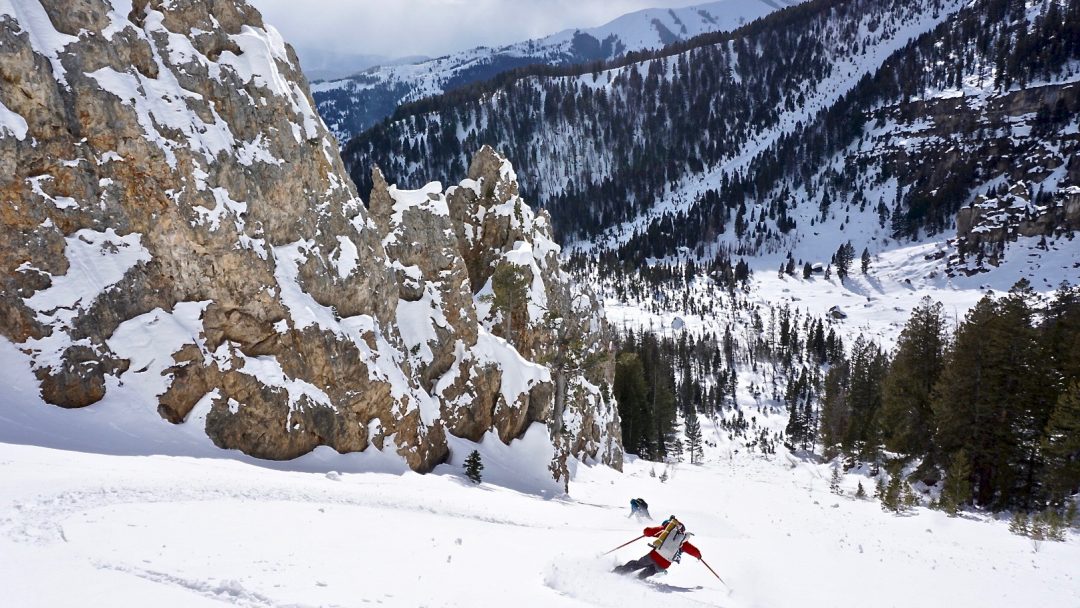
The Scarpa F1 LT at home during a traverse through the Gros Ventres outside of Jackson, WY. Photo: Clark Henarie
How it Tours
The F1 LT strides out the miles easily, even if we miss the awesome integrated string mechanism featured on its predecessor, the Alien RS. Although the top buckle-strap hybrid adds some skiing power, it does mean we are back to lifting the pant leg to adjust velcro before taking off uphill. To access the impressive 72-degree range of motion, you will want the cuff straps as loose as possible. The Vibram® UFO RS sole is great for walking on rocks, but the boot will quickly, if only cosmetically, deteriorate.
Gripes
Well documented in the above points, we found small sources for improvement, mostly due to testing that border on downright abuse. See a boot fitter after a few days of skiing to make up or take up space in the boot, deal with the minor annoyance of lifting your pant cuff for transitions and go out and enjoy skiing!
Closing Thoughts
The Scarpa F1 works great for experienced lightweight ski tourers or a skier looking to grow into a stiff and powerful boot. Once you make the switch, it will be hard to go back to your heavier boots, so expect some maintenance once you get over 100 days. No boot in the lineup has been tested or loved on harder than the F1 LT.
Size tested: 27.0
Verified Weight: ~990g
Women’s Specific Model: Yes, F1 LT W
ROM: ~ 72 degrees
Materials: Carbon Grilamid cuff and lower shell
Last: 100mm
Forward Lean: 9 degree, 11 degrees, and 13 degrees
MSRP: $899.00
While most of the WildSnow backcountry skiing blog posts are best attributed to a single author, some work well as done by the group.
